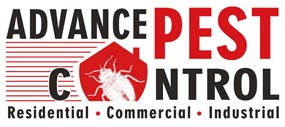June Bug Control
June Beetles are found in Eastern USA and Canada. These beetles belong to the family Scarabaeidae. Over 300 species of Scarab beetles are mostly referred to as June Beetle. Most common in BC are Phylophagus declineata (Reddish brown), Cotinis nitidae (Green beetles), Cotini mutabi (Black striped), Polippia japonica (Brown, Japanese beetle), Rhizptrogus majalis (Light brown European chaffer). P. declineata is most abundant and destructive in forest nurseries in BC. Generally, beetles are prolific multiplier and today one in four of animal on this planet earth are beetles and are part of up to 300 plus species. The genus Phylophaga, (leaf eaters) are also known as May Beetles or June Beetles since they emerge in late spring and June for mating. This period lasts for only few weeks and the adults die.
The female can lay 50-200 small pearl like eggs and burry these in soil. These eggs hatch and the larvae feed on plant roots for up to 3 years before pupation. The adults emerge in late summer and go back in soil during winter to come back in May or June for mating. Adult life is about a year. The immature stages of beetle’s family Scarabaeidae is indistinguishable as all are white in colour and appropriately called “White Grubs” which are about 25mm (1 Inch) long. The adults can vary in length from 12-25 mm (0.5 – 1 inch). These have heavy bodies, with 2 wings. June Beetles are poor flyers, their wings just provide lift. When these fall on ground they become an easy pray for birds and scavengers.
June bugs, thousands of them, most of the time stay in soil and eat crop roots or grass roots in your lawn. They are fond of the green lawns. These bugs don’t bite or sting. These can cause a considerable damage when these feed on foliage and flowers at night. Larvae can damage the roots and adults eat away the leaves. We may notice these like a swarm during warm spring evenings. These are nocturnal in nature but are attracted to bright lights, security lights, well lit windows and porch lights. These clumsy fliers hit hard to window pane or porch screen. A lot of dead ones are found below windows.
June bugs are food for the birds and mammals including, crows, blue jays, moles, raccoon, skunk, etc. These dig into soil to feed on grubs. Natural enemy is the waved light fly (Pyrogota undata) which lays eggs under wing casings and the larvae burry into the body whereas young flies eat away larvae and ultimately kill the bugs. Blue winged wasp also lays eggs under the hard shell and lead to their decimation. Grub nematodes and Bacillus thuringiensis can be applied to affected plants if adult infestation is noted. Quick remedy is removal and burning of infected plantation or turf. For the long-term control pesticide application of Bifenthrins spray during hot dry season and granules in wet weather is effective. The insecticides carbaryl, cyfluthrin, lambda-cyhalothrin are also recommended for the control June Bugs. The process needs to span over the life cycle of June Bugs, and may take 2 years. The services of experienced professionals from Advance Pest Control are imperative for the control of June Bugs
